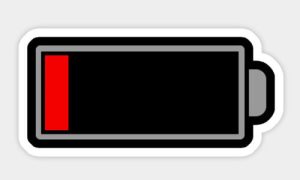
AGM Battery: Voltage and SOC/Capacity
The end voltage of an AGM battery is critical, because it affects whether the battery is over-discharged.Then how to set the end voltage?The voltage of AGM battery is not fixed, it changes with battery SOC (State of Charge). In different conditions, even if the SOC is the same, the voltage is still different.This post explains AGM battery voltage in the Open-Circuit, Discharge Condition, and Charge Condition.I will tell you how to set the end voltage and explain how it comes to be reasonable.The following is taking 12V battery as an example. If your battery is 6V or 24V, divide by 2 or multiply by 2 proportionally.
AGM Battery and Deep Cycle Application
AGM Battery refers to the lead-acid battery with AGM material as the separator, please take the reference here from Wikipedia.
For deep-cycle AGM batteries, cycle life and the setting of DOD (depth of discharge) are extremely important. They affect directly battery life and stable performance.
In the long run, 50% DOD is reasonable for the expense and battery working life. Although, for some special applications, DOD of 70% to 80% is also quite popular.
To achieve an appropriate DOD configuration, the end voltage is a really important parameter.

Open-Circuit Voltage of AGM battery
OCV refers to Open Circuit Voltage, which is the voltage value after 2 hours of inactivity without load or charge.
It can be considered as the highest voltage in the discharge condition or the lowest voltage in the charge condition.
The voltage may vary depending on the manufacturer’s material, temperature, or new/old battery.
| SOC(State of Charge) | OCV(Open-Circuit Voltage) |
| 100% | 12.85V |
| 75% | 12.55V |
| 50% | 12.25V |
| 25% | 11.95V |
| 0% | 11.65V |
SOC(State of Charge) means the remaining battery capacity, it is opposite to DOD.
For example, if you choose 50% DOD, you can set the end voltage at 12.25V. However, if the voltage drops to 12.25V under load, the actual remaining capacity will be more than 50%. Because the corresponding voltage is lower than the OCV voltage in the discharge condition. The higher the current, the lower the voltage.

The following table “Table-02” shows that with 0.1C discharge, when at voltage 12.25V, actually 80% of the capacity left.
AGM Battery Voltage under Discharge Condition 0.1C
0.1C means the current of 0.1*(Ampere Hour), for a 12V100Ah battery, 0.1C equals 10A.
| SOC(State of Charge) | AGM Battery Voltage |
| 100% | 12.50V |
| 80% | 12.25V |
| 60% | 12.05V |
| 50% | 11.95V |
| 40% | 11.75V |
| 20% | 11.35V |
| 0% | 10.80V |
From the above table, it is recommended to set the end voltage to 11.95V for 50% DOD. Even under low current or no discharge, the remaining capacity (SOC) is still 25% or more, which will not cause any damage to the battery.
But for 80% DOD, the end voltage is NOT recommended to set to 11.35V. If very small the discharge current or in the open-circuit state, the remaining energy is already 0%. It will do great damage to the battery.

In this case, it is more important to protect the battery. So, according to table-01, it is recommended to set the end voltage to 11.90V or 11.80V. The remaining capacity will be around 10% to 20%.
In addition to voltage, it is more important to configure the battery system based on the energy used per day or per cycle. When the energy usage occasionally exceeds the safety threshold, then the end voltage will come to stop it from harming the AGM battery.
Off-topic: A brief introduction to the high current discharge of UPS batteries
The above recommendations are based on a low current battery system such as a 0.1C discharge system. While for a high current system such as a UPS backup power supply, it is a different story.
In the case of a 5-minute backup system, the current can reach 3-4C and the voltage drops rapidly to 9.6V. In this case, the end voltage is usually set to 9.60V. The battery voltage will quickly return to normal once the high current disappears.

The influence of different factor on battery voltage
Under the charging or discharging conditions, different charging or discharging currents have an effect on the battery voltage.
In the charging condition, the higher the current, the higher the voltage. In discharging condition, the higher the current, the lower the voltage.
Different manufacturers, different production materials can affect the battery voltage.
The voltage of the battery will vary at different temperatures, the lower the temperature, the lower the voltage.
After a period of use, the battery voltage will be reduced.
Conclusion
For a common energy storage system, such as a home solar system, with a current discharge of about 0.1C, the end voltage can be set to 11.80-11.90V for the purpose of battery protection.

For a reasonable configuration, it is recommended to set the end voltage to 11.95V and make a good calculation of the daily energy consumption (per cycle), keeping most of the energy used below 50%.
For more information about Deep Cycle AGM battery, you can click the button below.






















